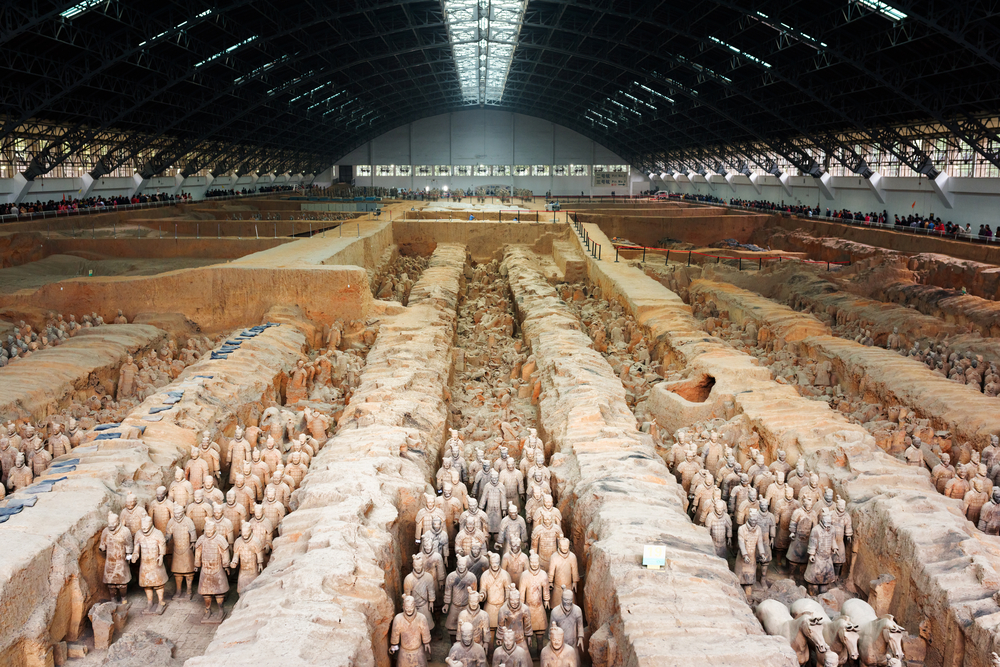It’s not hard to see why China’s life-size terracotta army might earn the unofficial moniker “eighth wonder of the world”. The 8,000-strong militia is a testament to exceptional craftsmanship and collaboration on a vast scale, not to mention the strength of one man’s dedication to the quest for eternal life.
The 2,200-year-old monument lies northeast of the city Xi’an in Shaanxi province and spans a jaw-dropping 56 square kilometers, making it the largest burial site in the world. It was constructed by a legion of craftspeople on behalf of Qin Shi Huang, a ruthless leader who declared himself the first emperor of China in 221 BCE.
Despite the army’s scale and grandeur, there were no records of its existence and it remained buried for over two millennia. It is only thanks to a group of local farmers, who came upon clay fragments when building a well in 1974, that the terracotta army has become the world-famous tourist attraction and archeological marvel that it is today.
Since its discovery, four pits have been excavated, the first containing thousands of inanimate soldiers standing in formation and wielding bronze weaponry. Despite their age, the warriors are in remarkable condition, displaying an exceptional level of detail from their individualized haircuts to the texture of their armor. Each stands, on average, 1.8 meters tall – making them above-average height for citizens of the Qin Dynasty. According to archaeologists, they would once have been painted – much like ancient Greek statues – but have become discolored over the centuries as a result of exposure to air.

Panoramic view of the famous Terracotta Army (Terracotta Warriors and Horses).
Image Credit: Efired/Shutterstock.com
The soldiers are thought to be one of the earliest known examples of mass production. According to the Met Museum, heads, arms, and other parts would have been made separately before being assembled. Clay would then be applied to the surface, allowing for greater individualization.
But it is not just soldiers. The site also contains more than 130 chariots and 600 horses, as well as officials, musicians, bronze waterfowl,l and even a troupe of acrobats – suggesting it is not so much an army but an entire court.
“We find the underground pits are an imitation of the real organization in the Qin dynasty,” told the Smithsonian. “People thought when the emperor died, he took just a lot of pottery army soldiers with him. Now they realize he took a whole political system with him.”
Historians believe the court was built to serve Qin Shi Huang in the afterlife. Qin Shi Huang – the ruler who unified China, introduced a single currency, and established a standardized writing system – was also obsessed with death and the search for eternal life. He consulted with alchemists, sought out the “islands of the Immortals” and drank elixirs containing mercury – an unhealthy habit that may have, ironically, led to an early grave.
Fifty years after its discovery, archaeologists have only just begun to uncover the secrets of Qin Shi Huang’s underground palace – a burial site thought to contain more than 600 pits. What’s more, the Emperor’s tomb itself remains strictly under wraps. While there is no unfounded concern that the tomb may contain booby traps and a toxic level of mercury, the main reason for its continued secrecy is a concern that excavating the tomb would risk causing serious damage.
Source Link: China’s Terra-Cotta Warriors: What You Might Not Know